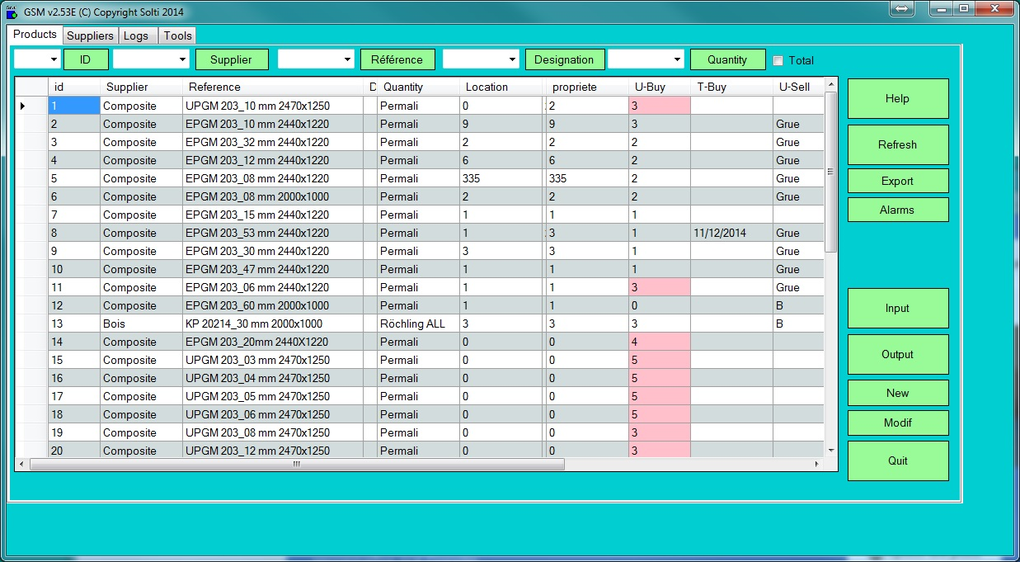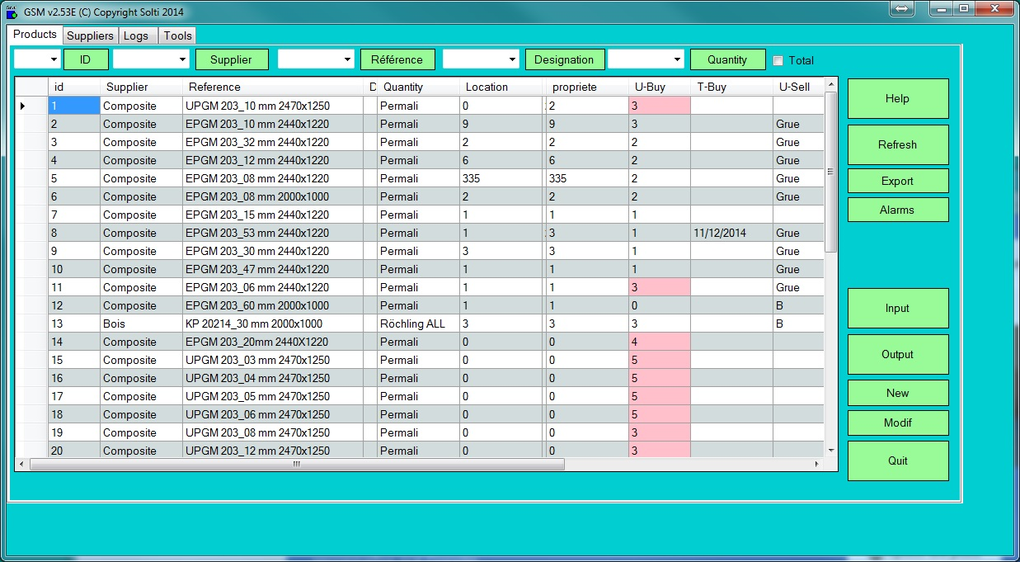
Okay, here is a comprehensive article about "Business Inventory Software Free Download," aiming for approximately 1200 words in English.
Unlocking Efficiency: A Comprehensive Guide to Business Inventory Software Free Download
In the bustling world of commerce, inventory is the lifeblood of almost every business, from a small e-commerce startup to a growing retail chain or a manufacturing plant. Managing this inventory efficiently can be the difference between thriving and merely surviving. Without proper oversight, businesses risk stockouts, overstocking, wasted capital, and frustrated customers. Traditionally, robust inventory management software came with a hefty price tag, placing it out of reach for many nascent or budget-conscious enterprises. However, the digital age has ushered in a game-changer: the availability of business inventory software free download options.
This comprehensive guide delves into the world of free inventory solutions, exploring their benefits, limitations, essential features, and how to choose the right one for your business.
The Pains of Manual Inventory Management
Before we explore the solutions, let’s understand the problem. Many small businesses begin their journey with manual inventory tracking – spreadsheets, notebooks, or even memory. While seemingly cost-effective initially, this approach quickly becomes a bottleneck as the business grows:
- Human Error: Typos, missed entries, and miscalculations are inevitable, leading to inaccurate stock counts.
- Time Consumption: Manually updating records, conducting physical counts, and generating reports is incredibly time-consuming, diverting resources from core business activities.
- Stockouts & Overstocking: Without real-time data, businesses struggle to maintain optimal stock levels, leading to lost sales due to stockouts or tying up capital in excess inventory.
- Lack of Visibility: It’s hard to identify slow-moving items, bestsellers, or predict future demand without comprehensive data.
- Inefficient Order Processing: Manual systems slow down order fulfillment, impacting customer satisfaction.
- Compliance Issues: Difficulty in tracking expiry dates, serial numbers, or lot numbers can lead to regulatory problems or product waste.
These challenges highlight the critical need for a structured, automated approach to inventory management.
What is Business Inventory Software?
At its core, business inventory software is a digital system designed to track, manage, and organize a company’s goods and materials. It provides a centralized database for all inventory-related information, automating many tasks that would otherwise be manual and prone to error. Key functions typically include:
- Stock Tracking: Real-time visibility into quantities, locations, and status of items.
- Order Management: Processing purchase orders, sales orders, and returns.
- Warehouse Management: Organizing inventory within warehouses, including bin locations and picking routes.
- Reporting & Analytics: Generating reports on sales trends, inventory turnover, stock valuation, and more.
- Reorder Management: Setting reorder points and automatically generating purchase orders when stock falls below a certain level.
- Barcode Scanning: Integrating with barcode scanners for faster and more accurate data entry.
- Multi-Location Support: Managing inventory across multiple warehouses, stores, or distribution centers.
The Allure of "Free Download"
The concept of a "free download" for business inventory software is particularly attractive for several reasons:
- Cost-Effectiveness: For startups and small businesses with limited budgets, eliminating the upfront cost of software is a significant advantage.
- Risk-Free Exploration: It allows businesses to test the waters, experiment with different features, and understand the benefits of inventory management without financial commitment.
- Immediate Solution: Many free solutions offer instant download and relatively quick setup, providing an immediate answer to urgent inventory problems.
- Learning Curve: Free software often has a simpler interface, making it easier for new users to learn the ropes of inventory management without being overwhelmed by complex features.
- Proof of Concept: Businesses can use free tools to prove the value of automated inventory management to stakeholders before investing in a paid, more robust system.
Key Features to Look For in Free Inventory Software
While "free" often implies limitations, many free inventory software options still offer a robust set of features suitable for smaller operations:
- Basic Item Tracking: Ability to add, edit, and categorize products with unique SKUs, descriptions, and quantities.
- Inbound/Outbound Tracking: Recording goods received and items shipped or sold.
- Basic Reporting: Simple reports on current stock levels, sales history, and potentially low stock alerts.
- Search and Filter Functions: Easily locate specific items within your inventory.
- Data Import/Export: Ability to import existing product lists (e.g., from a spreadsheet) and export data for backups or further analysis.
- User-Friendly Interface: An intuitive design that doesn’t require extensive training.
- Low Stock Alerts: Notifications when inventory levels drop below a predefined threshold.
Types of "Free" Inventory Solutions
It’s important to understand that "free" can come in various forms:
-
Open-Source Software: These programs are developed by a community of developers, and their source code is freely available for anyone to use, modify, and distribute.
- Pros: Highly customizable (if you have technical expertise), community support, no licensing fees.
- Cons: Requires technical know-how for setup and maintenance, limited dedicated customer support, features might not be as polished as commercial alternatives. Examples might include custom solutions built on platforms like ERPNext (which has an open-source version) or older, simpler dedicated open-source inventory trackers.
-
Freemium Models: Many commercial software providers offer a "free" tier with limited features, user capacity, or transaction limits. The goal is to entice users to upgrade to a paid version for more advanced functionalities.
- Pros: Often more polished interfaces, better basic support (documentation, forums), clear upgrade path.
- Cons: Scalability is limited on the free tier, essential features might be locked behind a paywall, data limits. Examples include free tiers of cloud-based inventory systems.
-
Trial Versions: While not truly "free" in the long term, many premium inventory software solutions offer free trial periods (e.g., 14 or 30 days).
- Pros: Access to full features of the paid version, excellent way to evaluate a system thoroughly before committing.
- Cons: Temporary solution, data migration can be an issue if you don’t convert to a paid plan.
-
DIY Spreadsheet Solutions: While not "software" in the traditional sense, advanced users can create sophisticated inventory management systems using tools like Google Sheets or Microsoft Excel, leveraging formulas, macros, and conditional formatting.
- Pros: Ultimate customization, zero software cost.
- Cons: Prone to manual error, lacks automation, no dedicated support, can become unwieldy with scale, security concerns for sensitive data.
Benefits of Implementing Free Inventory Software
Even with its limitations, adopting a free inventory solution can bring significant advantages:
- Improved Accuracy: Reduces manual errors, leading to more precise stock counts and fewer discrepancies.
- Enhanced Efficiency: Automates routine tasks like data entry and low-stock alerts, freeing up time for strategic activities.
- Better Decision-Making: Provides basic insights into inventory levels, helping you make informed decisions about purchasing and sales.
- Cost Reduction: Minimizes stockouts (preventing lost sales) and overstocking (reducing carrying costs and waste).
- Streamlined Operations: Improves the flow of goods, from receiving to shipping, making your supply chain more agile.
- Foundation for Growth: Establishes a systematic approach to inventory, creating a solid foundation for future scaling and the eventual adoption of more advanced systems.
- Customer Satisfaction: Ensures products are in stock when customers want them, leading to happier clientele.
The Caveats and Limitations of "Free"
While appealing, it’s crucial to approach free inventory software with realistic expectations:
- Limited Features: Free versions often lack advanced functionalities like multi-warehouse management, robust reporting, integration with e-commerce platforms, serial/lot number tracking, or advanced forecasting.
- Scalability Issues: As your business grows, a free solution might quickly become insufficient, necessitating an upgrade or a complete system migration.
- Lack of Dedicated Support: Free software typically offers minimal or no direct customer support. You might rely on community forums, online documentation, or self-help guides.
- Security Concerns: Open-source software, if not properly maintained or configured, might have security vulnerabilities. Freemium models from reputable companies usually have better security.
- Data Ownership and Portability: Always check the terms of service. Ensure you retain ownership of your data and that it can be easily exported if you decide to switch providers.
- Customization Limitations: Free tools usually offer little to no customization options beyond basic settings.
- Advertising: Some free software might display ads, which can be disruptive.
- Hidden Costs: While the software itself is free, you might incur costs for server hosting (for open-source), specialized IT support, or premium integrations.
Who Can Benefit Most from Free Inventory Software?
Free inventory management software is ideal for:
- Startups: Businesses just beginning their journey and needing a basic system to get organized.
- Small Businesses: Companies with a limited number of SKUs and relatively simple inventory needs.
- E-commerce Beginners: Online sellers starting with a small product catalog.
- Home-Based Businesses: Individuals managing a small stock of crafts, handmade goods, or reseller items.
- Proof-of-Concept Projects: Businesses wanting to test the viability of a product line or business model without significant investment.
- Educational Purposes: Students or individuals looking to learn about inventory management concepts.
How to Choose the Right Free Inventory Software
Selecting the best free option requires careful consideration:
- Assess Your Current Needs: What are your most pressing inventory problems? How many products do you have? Do you track expiry dates or serial numbers?
- Research Available Options: Look for reputable open-source projects, well-reviewed freemium services, or even robust spreadsheet templates.
- Read Reviews and Testimonials: See what other users are saying about ease of use, reliability, and specific features.
- Check System Requirements: Ensure the software is compatible with your operating system and hardware.
- Test Thoroughly: Download and use the software with a small subset of your inventory. Get a feel for its interface and functionality.
- Consider Future Growth: While it’s free, think about the upgrade path. Does the provider offer paid plans that you could transition to seamlessly if your needs grow?
- Evaluate Support and Community: For open-source, check the activity level of the community forum. For freemium, review available documentation and basic support options.
- Data Import/Export Capabilities: Ensure you can easily get your data into and out of the system.
Conclusion
The availability of business inventory software free download options has democratized efficient inventory management, making it accessible to businesses of all sizes, especially those operating on tight budgets. While these solutions come with inherent limitations compared to their premium counterparts, they offer a powerful starting point for businesses looking to overcome the challenges of manual tracking, reduce costs, improve accuracy, and lay a solid foundation for future growth.
By understanding the types of free offerings, recognizing their benefits and limitations, and carefully evaluating options based on your specific needs, you can leverage these tools to bring order and efficiency to your inventory, empowering your business to focus on what it does best: serving customers and growing. The journey to optimized inventory management often begins with a single, smart, and free download.


